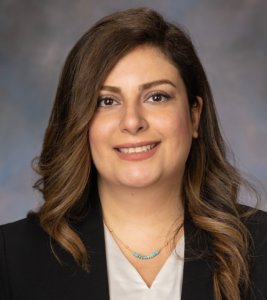 CMT1B is one of the most common forms of CMT. In CMT1B, the part of the nervous system that is dysfunctional is the myelin sheath of the peripheral nerves. Created by cells called Schwann cells, myelin wraps around the parts of the nerves that facilitate rapid electrical signals from the brain to other parts of the body.
CMT1B is one of the most common forms of CMT. In CMT1B, the part of the nervous system that is dysfunctional is the myelin sheath of the peripheral nerves. Created by cells called Schwann cells, myelin wraps around the parts of the nerves that facilitate rapid electrical signals from the brain to other parts of the body.
In CMT1B, the myelin sheath is compromised because the Schwann cells have mutations within a gene called myelin protein zero, or MPZ (aka P0). CMT1B follows an autosomal dominant inheritance pattern, meaning that a person can inherit the disease from only one parent. Each child of an affected parent, both boys and girls equally, have a 50/50 chance of inheriting the disease.
The award from The CMT Research Foundation was made to Afrooz Rashnonejad, PhD, Assistant Professor at the Ohio State University’s Department of Pediatrics and Principal Investigator at the Nationwide Children’s Hospital Center for Gene Therapy in Columbus, Ohio. In this project, the researchers will create a gene therapy with multiple components. The first major component will be a microRNA (or just miRNA – note the ‘i’) that can prevent mutated MPZ from being expressed. The second major component will be a healthy copy of the messenger RNA (mRNA – no ‘i’) that is resistant to the effects of the microRNA.
“The idea behind the approach, known as ‘knockdown and replace,’ is to silence the expression of the mutated gene and replace it with a healthy signal, allowing the nerves to create a healthy protein,” says Dr. Rashnonejad. “This approach could work for all or nearly all forms of CMT1B, a highly desirable outcome.”
The overall goal of this project is to create the gene therapy by a) combining the best performing miRNA and the resistant mRNA into a single construct, b) inserting this construct into an AAV9 delivery vector, and c) testing the therapy in CMT1B mice.
Dr. Rashnonejad is the Chair of the American Society of Gene & Cell Therapy New Investigator Committee and has twice received the ASGCT Excellence in Research Award. She developed an AAV-CRISPR-Cas13 gene therapy for FSHD, and has filed several patent applications, including one for CMT1B-targeted gene therapy.
The CMT Research Foundation is committed to finding effective treatments and cures for all forms of CMT. Read more about the research we fund.
